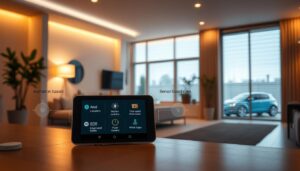Smartphones hold untapped potential beyond everyday use. Hidden beneath standard menus lies a suite of professional-grade tools designed to elevate device functionality. Originally created for app creators, these options now empower users to customize their gadgets like never before.
Enabling these advanced settings unlocks control over animations, hardware performance, and system diagnostics. While hidden by default in modern versions, activation requires just a few taps in the settings menu. No coding expertise or technical background is needed to start exploring.
Users gain access to critical functions like USB debugging for software analysis and real-time performance monitoring. Adjusting graphics rendering methods can boost speed, while detailed battery usage reports help optimize power consumption. These adjustments transform ordinary gadgets into precision-tuned machines.
The true value lies in balancing customization with stability. Thoughtful tweaks can revitalize older devices or push new hardware to its limits. From troubleshooting glitches to enabling experimental functions, these tools put users firmly in the driver’s seat of their technology.
Understanding the Developer Mode Landscape
Modern devices contain layered settings that transform ordinary operation into tailored experiences. At the core lies a collection of specialized controls designed for both technical adjustments and creative exploration.
Overview of Developer Options
These hidden controls offer direct access to system-level functions typically reserved for software creators. Users can monitor real-time memory usage across active apps, generate detailed error reports, and capture clean interface screenshots without clutter. The menu also provides secure methods for backing up device data through encrypted connections.
Key tools include:
- Memory allocation trackers showing app resource consumption
- Diagnostic utilities for identifying software conflicts
- Visual customization settings for presentations
Benefits and User Intent
Enabling these advanced options serves multiple purposes. Tech enthusiasts optimize processing speeds by adjusting background limits, while creative professionals use demo modes for polished visual captures. Troubleshooting becomes streamlined through automatic log generation that pinpoints system errors.
Personalization extends to network configurations and input responsiveness tuning. Users gain precise control over how their device manages tasks, balances power usage, and interacts with external hardware. These adjustments help extend hardware lifespan while maintaining smooth operation across daily use scenarios.
How to Enable Developer Options on Your Device
Unlocking hidden system controls requires knowing where to look. The process begins with accessing a specific menu item that varies by manufacturer. This universal method works across most modern smartphones, though menu paths differ slightly.
Locating the Build Number
Finding the build number is the critical first step. For Google Pixel models, navigate to Settings > About phone. Samsung Galaxy users must go deeper: Settings > About phone > Software information. LG and HTC devices bury this option under multiple submenums like Software info or More. OnePlus keeps it simple under About phone.
Activating Developer Mode with Precision
Once located, tap the build number seven times rapidly. A countdown appears after the third tap, culminating in a “You are now a developer!” confirmation. This action instantly adds Developer Options to the main Settings menu.
Some custom interfaces might require additional attempts. If the message doesn’t appear, ensure you’re tapping the exact build number field – not software version or model details. Restarting the device often resolves activation issues for modified firmware.
Exploring Android developer mode features
Hidden within smartphone settings lie powerful instruments for optimizing daily operations. These specialized controls reveal granular details about resource allocation and background processes, offering users unprecedented oversight.
Key Features and Their Functionality
The memory tracker displays real-time RAM consumption across all active applications. Users analyze patterns over customized intervals to spot power-draining software. Detailed breakdowns help identify which programs hog resources during specific usage windows.
Built-in bug reporting tools create instant snapshots of system activity. These logs capture errors for technical analysis, whether shared with support teams or used for personal diagnostics. The stay awake setting proves essential during extended troubleshooting sessions, keeping screens active while charging.
Enhancing Device Performance Through Hidden Tools
Advanced logging capabilities extend to wireless connectivity analysis. Bluetooth packet monitoring helps resolve pairing issues by recording every data exchange. The running services menu exposes background processes consuming CPU cycles, allowing users to terminate unnecessary operations.
These system options transform ordinary gadgets into diagnostic powerhouses. By balancing resource allocation and eliminating background bloat, devices regain responsiveness without hardware upgrades. Proactive monitoring through these tools often prevents performance degradation before users notice slowdowns.
Customizing System Animations and Performance
Visual responsiveness shapes how users interact with their devices daily. Hidden animation controls let users balance aesthetics with efficiency, creating tailored experiences that match personal preferences and hardware capabilities.
Adjusting Window and Transition Animation Scales
The window animation scale dictates how quickly apps appear or disappear. Lower values reduce visual delays when launching programs. Similarly, the transition animation scale controls movement between open applications.
Setting both to 0.5x creates snappier navigation without losing visual feedback. This tweak proves particularly effective on devices with limited processing power. Some interfaces malfunction when animations are fully disabled, making partial reductions safer.
Fine-Tuning Animation Speed for a Smoother Experience
Animator duration scale governs micro-interactions like button presses and menu expansions. Reducing this scale accelerates every visual cue, creating an illusion of heightened speed.
Combined adjustments across all three settings yield optimal results. Users report older devices feeling revitalized when animations operate at half their default duration. Newer models benefit from reduced battery drain during intensive multitasking.
Advanced Debugging and Troubleshooting Techniques
Transforming smartphones into diagnostic powerhouses requires specialized tools. Hidden settings provide granular control over software interactions, allowing users to identify and resolve issues at their source. These capabilities turn everyday gadgets into professional-grade troubleshooting stations.
Mastering USB Debugging and Log Management
USB debugging bridges devices and computers for deep system analysis. Activation paths vary: Android 9+ users navigate Settings > System > Advanced > Developer Options, while older versions simplify access through fewer menus. Once enabled, this feature permits direct communication with development environments like Android Studio.
Log management becomes precise through buffer size adjustments. Larger buffers preserve historical activity data for pattern recognition, while smaller ones focus on recent events. This balance helps optimize memory usage during extended diagnostic sessions.
Utilizing Layout Inspector for App Diagnostics
The Layout Inspector dissects interface elements with surgical precision. Enabling view attribute inspection reveals hidden details about app layouts, from button dimensions to color codes. This tool proves invaluable when troubleshooting display glitches or optimizing user interfaces.
Real-time component tracking shows how apps consume resources during operation. Developers and power users alike leverage these insights to streamline process flows and eliminate performance bottlenecks. Combined with debug logs, this creates a comprehensive toolkit for maintaining peak device functionality.
Enhancing Developer Experience with Networking and Input Tools
Precision connectivity controls transform how devices interact with peripherals and networks. Specialized settings offer granular adjustments for wired and wireless communications, ensuring optimal performance across diverse scenarios. These tools bridge the gap between standard operations and professional-grade diagnostics.
Optimizing Wi-Fi, USB, and Bluetooth Settings
The USB configuration menu unlocks multiple connection protocols. Users choose between charging-only modes, high-speed file transfers, or PC internet sharing. Audio enthusiasts benefit from MIDI compatibility settings that enhance music production workflows.
Bluetooth adjustments extend beyond basic pairing. Selecting codecs like LDAC or aptX HD elevates wireless audio quality for premium headphones. Compatibility options ensure seamless connections across different hardware generations.
Using Show Taps and Pointer Location for Precise Testing
Visual feedback tools revolutionize touch interaction analysis. Enabling Show Taps creates circular indicators beneath fingertips, perfect for recording tutorial videos. This screen feedback helps identify unresponsive zones during quality checks.
Pointer Location overlays coordinate grids and tracking paths across the display. The crosshair marker at the top provides real-time positional data for gesture accuracy testing. Combined, these settings transform standard devices into precision input analysis stations.
Optimizing Graphics and Hardware Rendering Options
Modern smartphones pack hidden visual customization tools that rival professional workstations. These advanced settings transform how games and applications render graphics, offering both performance boosts and accessibility improvements. Users gain precise control over rendering pipelines and color accuracy through specialized options.
Leveraging GPU Debug Options and Overdraw Analysis
The GPU debug menu reveals how efficiently apps draw visuals. Overdraw analysis uses color layers to show where screens render pixels multiple times. Red zones indicate wasted processing power – areas where apps draw invisible elements behind foreground objects.
This tool helps identify poorly optimized games or streaming apps. By reducing overdraw, devices conserve battery life and prevent thermal throttling during extended use. The visual feedback makes complex rendering concepts immediately understandable.
Simulating Color Space and Enabling Force 4x MSAA
Color space simulation tests interface visibility for various vision types. Options include monochrome displays and color blindness profiles. Designers use this to ensure apps remain functional for all users.
Force 4x MSAA applies multisample anti-aliasing to smooth jagged edges in 3D games. While enhancing visual quality, this setting demands more from the GPU and accelerates power drain. High-end devices handle it best, while older models may struggle with sustained performance.
Balancing these tools requires understanding their impact on both top screen quality and energy consumption. Strategic adjustments can make graphics-intensive apps run smoother without sacrificing essential battery life.
Wrapping Up Developer Mode Enhancements
Unlocking advanced system controls reveals a new dimension of device personalization. The developer options menu serves as a gateway to granular adjustments, from memory allocation tracking to real-time performance metrics. These tools empower users to transform standard hardware into precision-tuned machines.
Key enhancements include streamlined debugging protocols and visual customization settings. While exploring these system adjustments, prioritize stability by testing changes incrementally. Most modifications revert automatically when the menu gets disabled, safeguarding against lasting issues.
Power users benefit most from features like app resource monitoring and network optimization tools. The ability to analyze background processes helps eliminate software bloat, extending battery life across daily usage scenarios. Always balance experimental tweaks with core functionality needs.
Through thoughtful exploration, these hidden settings unlock professional-grade control over your device. Whether refining animations or diagnosing connectivity issues, the tools adapt to diverse user needs without requiring technical expertise. Mastery lies in leveraging these options to create a smoother, more responsive mobile experience.



